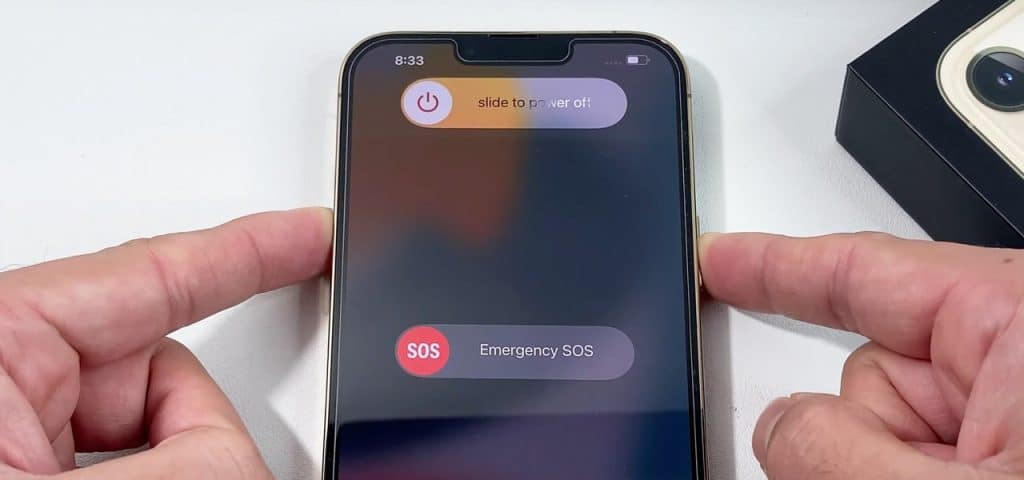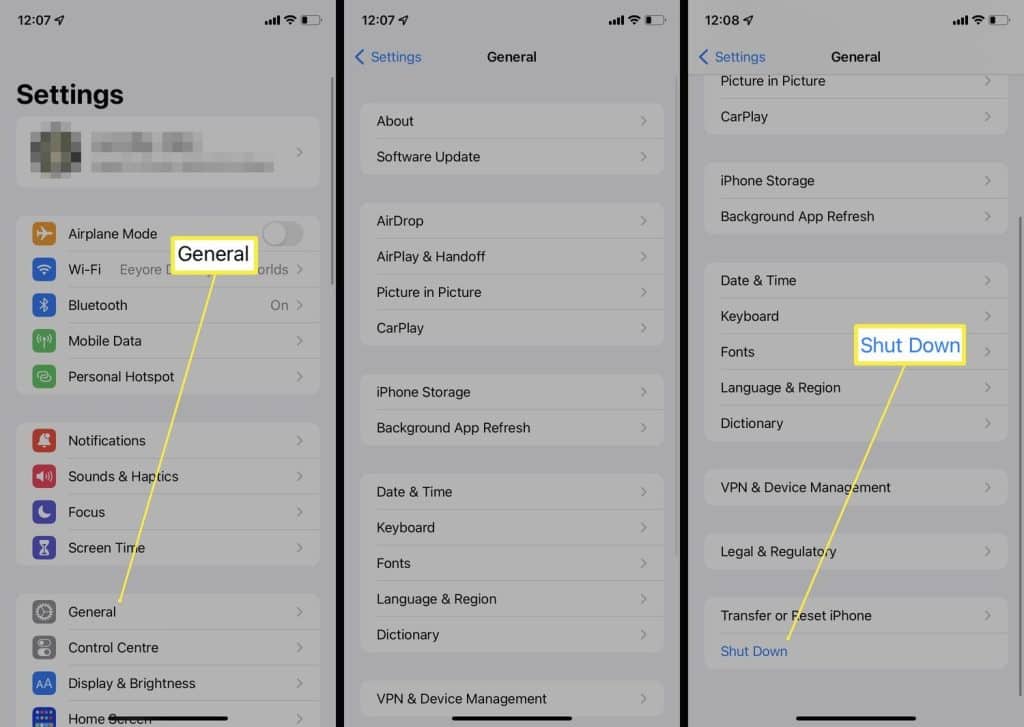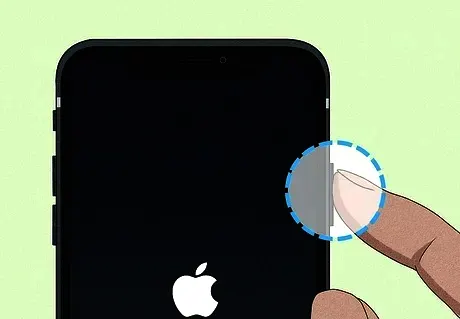
Learn the Basics of Powering ON and OFF Your Apple’s Device
Turning off your iPhone may seem like a straightforward task, but with different models and software updates, the process can vary. Whether you’re looking for ways on How to turn OFF your iPhone be it for troubleshooting, conserving battery life, or or simply need a digital detox, knowing the correct steps is essential.
Before We Begin: A Gentle Reminder
While turning off your iPhone is a safe and common practice, it’s important to note that a simple restart can often resolve minor glitches or software issues. A restart allows it to refresh its memory and potentially fix the problem without needing a complete shutdown. If you suspect a software issue, consider restarting your device before turning it entirely off.
Turning Off iPhone Models with Face ID (iPhone X and Later)
- Locate the side button (also known as the power button) on the right side of your Phone.
- Simultaneously press and hold the side button and either volume button (up or down) for a few seconds.
- A slider titled “Slide to power off” will appear on the screen.
- Drag the slider from left to right using your finger.
- Your iPhone will shut down completely, and the screen will turn black.
Turning Off iPhone Models with a Home Button iPhone SE (1st & 2nd Gen), iPhone 6s Plus, iPhone 6s, etc.)
- Locate the side button (also known as the power button) on the right side of your iPhone, usually positioned near the top.
- Press and hold the side button for a few seconds.
- A slider titled “Slide to power off” will appear on the screen.
- Drag the slider from left to right using your finger.
- Your iPhone will shut down completely, and the screen will turn black.
Turning Off Your Phone Using Settings (All Models)

This method works for all device models, regardless of whether they have Face ID or a Home button.
- Open the Settings app on your Apple device.
- Scroll down and tap on General.
- Scroll all the way down to the bottom of the General menu and tap on Shut Down.
- A slider titled “Slide to power off” will appear on the screen.
- Drag the slider from left to right using your finger.
- Your iPhone will shut down completely, and the screen will turn black.
Turning Your iPhone Back On

Once you’re ready to use your device again, simply press and hold the side button (or the power button on older models) until you see the Apple logo appear on the screen. Your iPhone will boot up, and you’ll be ready to go!
Additional Tips:
If your iPhone screen is unresponsive or frozen, you might need to perform a forced restart. The method for a forced restart varies depending on your iPhone model. You can find specific instructions for your model by searching online or referring to Apple’s official support website: Support Apple
It’s generally safe to turn off your Phone whenever you need to. However, if you’re in the middle of an important update or data transfer, it’s best to wait until the process is complete before shutting down your device.
Advanced Power Management on iPhone
While turning your device off entirely is a straightforward process, there’s more to explore when it comes to managing your device’s power consumption. Here’s a deeper dive into some advanced power management features available on iPhones:
Low Power Mode: Optimizing Battery Life on the Go
When you’re running low on battery and need to stretch it a little further, Low Power Mode can be a lifesaver. This feature reduces background activity, throttles down processor performance, and temporarily disables certain features like automatic downloads and email fetch. While in Low Power Mode, you might experience slightly slower performance, but it’s a small price to pay for extended battery life.
Activating Low Power Mode
- Through Settings: Navigate to Settings > Battery. Toggle the switch next to Low Power Mode to activate it. The battery icon in the status bar will turn yellow to indicate Low Power Mode is active.
- Control Center Shortcut (iOS 11 and Later): Swipe down from the top-right corner of your screen (iPhone X and later) or swipe up from the bottom of the screen (iPhone 8 Plus and earlier) to open Control Center. Locate the battery icon and tap on it to activate Low Power Mode.
Understanding Low Power Mode’s Impact
- Background app refresh is paused.
- Mail fetch is disabled until you manually open the Mail app.
- Automatic downloads are put on hold.
- Visual effects like background blur are reduced.
- Some features like 5G might be limited (depending on model and carrier).
- Low Power Mode automatically deactivates when your iPhone charges to 80%, ensuring you get the full performance when your battery is sufficiently charged.
Optimizing Battery Health for Long-Term Use
Taking care of the battery goes beyond simply turning off the device. iOS offers features that help optimize battery health and maximize its lifespan.
- Battery Health: Navigate to Settings > Battery > Battery Health. This section displays your iPhone’s maximum battery capacity and its ability to deliver peak performance. Ideally, you want this number to be as close to 100% as possible.
- Optimized Battery Charging: This feature helps reduce battery wear by learning your daily charging routine. It delays charging past 80% until just before you typically wake up, minimizing the time your iPhone spends fully charged. To enable it, go to Settings > Battery > Battery Health and toggle the switch next to Optimized Battery Charging.
Advanced Power Management Tips
- Reduce Screen Brightness: A brighter screen consumes more battery. Adjust your screen brightness to a comfortable level through the Control Center or Settings > Display & Brightness.
- Turn Off Location Services for Unused Apps: Location services can be a battery drain. Go to Settings > Privacy > Location Services and review which apps have access to location data. Disable location services for apps that don’t require it.
- Manage Background App Refresh: Background App Refresh allows apps to fetch new content even when they’re not actively in use. While convenient, it can consume battery. Go to Settings > General > Background App Refresh and choose which apps can refresh in the background or disable it entirely.
By understanding these advanced power management features and implementing these tips, you can not only effectively turn off your iPhone but also optimize its battery life for a longer and more efficient user experience.
Pro Tip: If you’re curious on jailbreaking your Apple’s device, here’s how to do it


